Travel
Bringing Life to Cebu’s Heritage

At present, Cebu is an interesting study of contrasts. The rapid development of the city—especially in terms of the business process outsourcing and real estate industries—have led to it to becoming one of the most modern cities in the country, yet fascinatingly enough it remains embedded in its history and culture, the heritage of which has shaped its identity.

Magellan’s Cross (Photo by Snapholic/Originally published in Zee Lifestyle, June 2013)
“The concept of heritage is anything of value that we treasure because it holds meaning for us,” says heritage architect Melva Rodriguez-Java. “Because it holds meaning for us, we want to take care of it to transmit it to the next generation.”
While there have been notable continuous efforts to preserve Cebu’s rich heritage, it remains an ongoing struggle, especially with certain factors in play. Following the devastation in the aftermath of the natural disasters that struck last year, Java realized just how unprepared the country is in taking care of its heritage. “The government was unable to respond immediately and correctly to the damages brought by Yolanda and the earthquake,” she explains, citing the fragmentary restoration labors for the Fort San Pedro and the belfry of the Basilica Minore del Sto. Niño, the restoration of which she is currently involved in. She adds that in the case of the Sto. Niño, international experts came in and volunteered to teach them how it’s done.

Heritage architect Melva Rodriguez-Java working on site at the belfry of the Basilica Minore del Sto. Niño (Photo courtesy of Melva Java)
Beyond the shortcomings of the government, the rapid globalization, while having its positive repercussions, considerably affects the identities of the citizens. “Globalization is there. It’s a fact,” she states. “But we cannot just go on floating and being carried here and there. We need grounding, and that grounding is appreciating our roots. Part of being able to do that is awareness of heritage.”
Java acknowledges some people think heritage appreciation is an elitist thing only for the educated, yet shoots the misconception down, saying that it’s very grassroots. “Maybe it’s not innate in everybody,” she admits. “It has to be developed. It has to be learned. Like a taste for food, it has to be acquired.”
It starts with awareness of heritage, as awareness develops appreciation. “When you appreciate things, you begin to value them. You begin to protect and care for them. That’s what we want to happen with heritage,” Java says.
Thanks to the development of technology, efforts to be aware and appreciative are one notch more interesting. With museums and tours taking a more interactive approach, gone are the days of going around and visiting Cebu’s historical sites being boring.
“History must be taught in a fun way. That’s how you get people’s attention,” Ka Bino Guerrero shares in a profile written about him for Zee Lifestyle’s June 2013 Arts & Culture issue. Ka Bino started the Old Cebu Walks, which takes people from Magellan’s Cross through nearby churches before ending up at the ancestral homes in Parian. He interjects his personality into his tours, along with interesting anecdotes that may not be in history books.
Max and Marlen Limpag, who were featured on Zee Lifestyle’s July 2014 Men’s & Technology issue, began a digital tourism campaign through their startup company InnoPub Media. One of their projects is data-tagging tourism and heritage sites with QR codes. When people scan these codes using their mobile gadgets, they are provided with little tour guides right in their hands.
“Heritage work is hard work,” Ka Bino says, admitting that the benefits are more like just a pat on the back. “More than the monetary aspect, there is the respect. It’s very rewarding. There’s no recognition, but it’s more like having the satisfaction of being a part of something bigger.”
Historical and heritage sites may mostly be tourist attractions, and with good reason: they paint a cultural picture and offer something we have that they don’t. Yet more than anything, these places are a story of humanity—a story about us. “We understand ourselves better when we know where we come from,” Java concludes. The refreshing and innovative approaches to heritage breathe new life and renew our pride in it.
In June 2013, Ka Bino invited Zee Lifestyle to join him on one of his Old Cebu Walks. Here’s a sneak peek into his itinerary.
MAGELLAN’S CROSS
Planted by Ferdinand Magellan’s men upon arriving in Cebu in April 21, 1521, the Magellan’s Cross is the symbol of the Cebuano’s acceptance of the Christian faith—although Ka Bino explains there might be more shrewd reasoning behind Rajah Humabon’s acceptance of the foreigners. “He saw it as a business opportunity to be able to trade with more places,” he says, explaining that before the Spanish arrived in Cebu, it was already a community that traded with various other Asian countries.

Ka Bino Guerrero at the Magellan’s Cross (Photo by Snapholic/Originally published in Zee Lifestyle, June 2013)
As various vendors approach with candles and an offering to say prayers, Ka Bino explains the practice that he usually encourages his guests to take. “I tell them to buy the candles, let the ladies say their prayers, then bring the candles home instead of leaving them here,” he says. “You can no longer light candles inside this monument because it’s a fire hazard, so you might as well bring them along and light them when you are badly in need of spiritual guidance.”
BASILICA MINORE DEL STO. NIÑO
Built in 1725, the Sto. Niño Church is probably Cebu’s most iconic for being the center of the popular Sinulog Festival. “When it was built, they didn’t have cement so they would use egg whites,” Ka Bino explains. “So if you wanted to get married or have your baptism in the church, you would have to donate a hen. The hen lays the eggs, and the egg whites are used to build the church. That’s why we have a lot of delicacies that use just the egg yolks.”

Basilica Minore del Sto Nino (Photo by Snapholic/Originally published in Zee Lifestyle, June 2013)
Approaching the façade of the church, Ka Bino points out the cement statues by the entrance. “The church itself is very Hispanic, but what’s this thing over here? It’s a Chinese foo dog. That’s how crazy we are when it comes to decorating, we just put everything in it.” The large doors themselves are carved with images of saints, including St. Peter. “In the early days, we were made to believe that you could only get to salvation through the church. That’s why church doors are so ornately done—they represent the gates of heaven.”
STREET VENDORS
“It’s Filipino tradition that after attending mass, you have to buy flowers to offer to your altar at home,” Ka Bino explains while walking through the alley across the church, filled with baskets of fresh and colorful flowers brought in from Cebu’s upland barangays.
Right next to one vendor is a food cart, filled to the brim with familiar local treats, like rosquillos, pinasgbo, masareal, tagaktak and chicharon. “Flowers for God, and food for the children,” he says. “Food is part of our heritage. Sometimes we take it for granted, but it’s another way of learning about our culture.”

Ka Bino Guerrero at a flower stall in downtown Cebu (Photo by Snapholic/Originally published in Zee Lifestyle, June 2013)
CEBU METROPOLITAN CATHEDRAL
“It’s time for the sad stories,” says Ka Bino as we enter the Cathedral’s compound. Besides the bomb that fell on the church during World War II and destroyed a substantial part of the structure, another sad story lay in the image that stands in the courtyard. “Miguel Lopez de Legaspi arrived in Cebu, it was the feast day of San Vidal, who was the patron saint of Cebu for the longest time. Every feast day, the image of the Sto. Niño would be brought to the Cathedral. But Pope Innocent ordered that all feasts of the child Jesus should be moved to January, so the feast of the Sto. Niño got moved and this guy was relegated to the courtyard. Today, if you ask a regular Cebuano about San Vidal, they will tell you he’s not a saint but the former bishop of Cebu.”
The Spanish king’s coat of arms is carved above the entrance of the church, commemorating the fact that the King of Spain had financed its construction. “Once upon a time, this was the seat of the biggest diocese in the Philippine ecclesiastical map,” Ka Bino says. “Guam was a part of the diocese, which is why we sent Pedro Calungsod there. Dumaguete, Tagbilaran, Leyte—they are just daughter dioceses that were once part of Cebu’s.”

Cebu Metropolitan Cathedral (Photo by Snapholic/Originally published in Zee Lifestyle, June 2013)
THE RAJAH HUMABON MONUMENT
Sitting on a monument in the middle of a fork in the road, the image of Rajah Humabon sits proudly on his pedestal. “He is the king of Cebu and he is pintados,” Ka Bino introduces, pointing out the tattoos that cover almost all surfaces of his body. “In the early days, tattoos were medals of valor. It’s a merit. You can’t just get a tattoo because you want it; you have to earn it. The first battle you win can earn you a tattoo on your feet. Humabon has tattoos on his face, so you can imagine just how powerful he must have been.”
With several tidbits on daily life back then, Ka Bino gives a fitting explanation about why Cebuanos often find themselves in need of a nightcap. “In the early days, Cebuanos could drink like there was no tomorrow. Drinking and eating were like one activity,” he explains. “In town hall meetings, drinking was always welcome because when they get tipsy, the discussion becomes more animated.” Sounds like a great party to us.

The Rajah Humabon Monument (Photo by Snapholic/Originally published in Zee Lifestyle, June 2013)
JESUIT HOUSE
A colonial house in Cebu that dates back to 1730, the Jesuit House sits inside the Hotong Hardware bodega, a juxtaposition that Ka Bino finds interesting for tours. “I love the faces of my guests when they enter. They’re always like ‘why is my guide bringing me into a warehouse?’” The winding hallways of the bodega chronicle the history of Chinese presence in the Philippines and Cebu, which is in homage to its original occupants, the Jesuit priests. “The Jesuits were actually assigned to Christianize China, and the Philippines was a jumping point. They were assigned to the Chinese communities here as part of their training.”
The house is the only one in Cebu that is bahay na bato from floor to ceiling, and has an erratic history that’s included religious groups, old Cebuano families, and even a stint as Club X back when Serging Osmeña rented out the house for his exclusive gentlemen’s club.

A display at the Jesuit House (Photo courtesy of PR Works/Originally published in Zee Lifestyle, June 2013)
YAP-SANDIEGO HOUSE
“It’s an old house, but most of the furniture had to be brought in,” Ka Bino explains. “It belonged to the ancestors of Val Sandiego, but he’d only gotten a portion because it was shared with the other members of the family. When his house in Capitol burned down, one of his relatives offered to give him their share and he slowly started getting everyone’s shares of the house. He even bought some of them out, then he had it restored.”
It’s an individual effort that’s very admirable, considering that restoring the house completely would take at least P15 million. The cost is staggering, which makes Ka Bino hope for some help from the government regarding preservation matters. “The government should encourage or give incentives to people doing this,” he says.

The Yap-Sandiego Ancestral House (Photo courtesy of PR Works/Originally published in Zee Lifestyle, June 2013)
“It’s a collective memory. Heritage isn’t owned by some—it belongs to the people.”
– Ka Bino Guerrero
THE CEBU HERITAGE MONUMENT
“If you just had one hour in Cebu and want to see something historical, you should visit the Cebu Heritage Monument,” says Ka Bino. “It’s a city tour in one stop—the Magellan’s cross, the churches, the historical battles.” Sculpted by local artist Eduardo Castrillo, with the help of the late senator Marcelo Fernan, the monument was finished in 2000 and depicts several places and scenes that are integral to Cebu’s history. These include the Basilica del Sto. Niño, a Spanish galleon, the battle of Mactan between Lapu-Lapu and Magellan, the late president Sergio Osmeña Sr., and the recently canonized Pedro Calungsod.

The Cebu Heritage Monument (Photo by Snapholic/Originally published in Zee Lifestyle, June 2013)
by Patty Taboada
This story is an addendum to ‘Memory Lane’ written by Shari Quimbo, originally published on Zee Lifestyle’s June 2013 issue.
Lifestyle
Find Your Summer Spirit in Shangri-La Mactan, Cebu
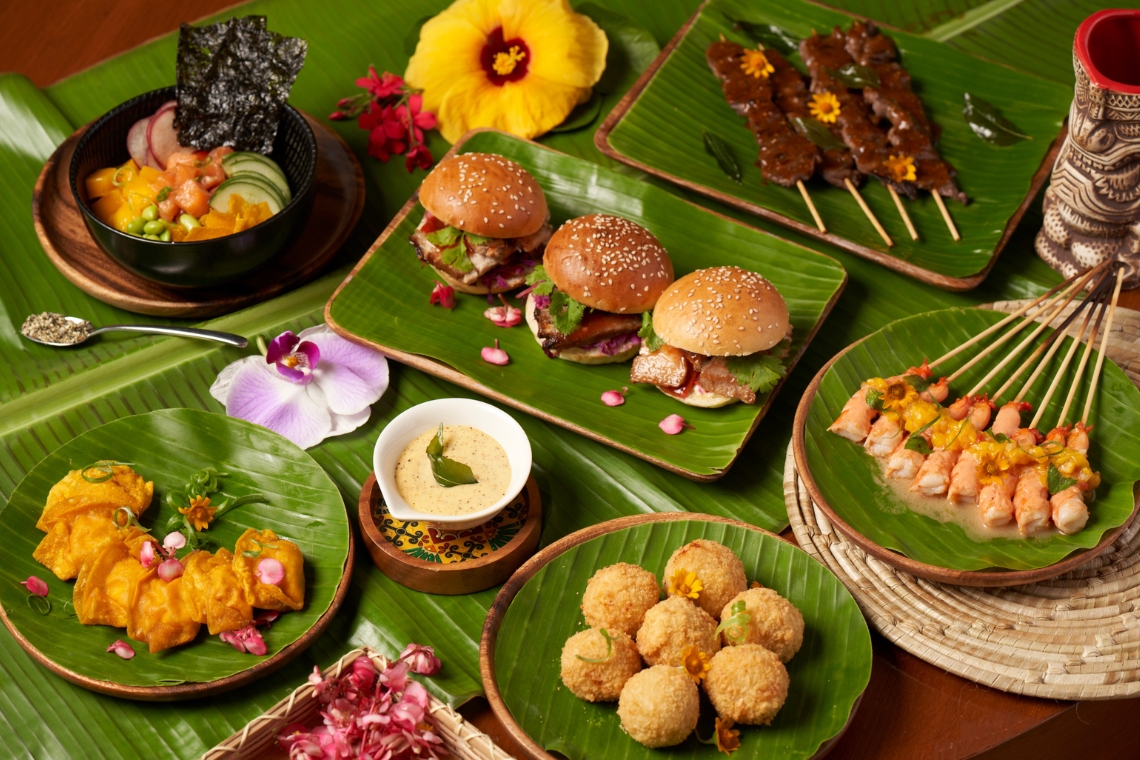
Breathe in the tropical atmosphere, as you find summer joys through sight, sound and taste at Shangri-La Mactan, Cebu. Poolside fun during the day, spent serenely and luxuriantly—a refreshment in hand. While the evenings are for outdoor family movie nights, with the ocean waves rippling in the background.
Summer is all of that, and more! Plan an extraordinary weekend with an array of exciting activities that await your arrival. Discover your #ShangriLaSummerSpirit from 15 July to 30 August.
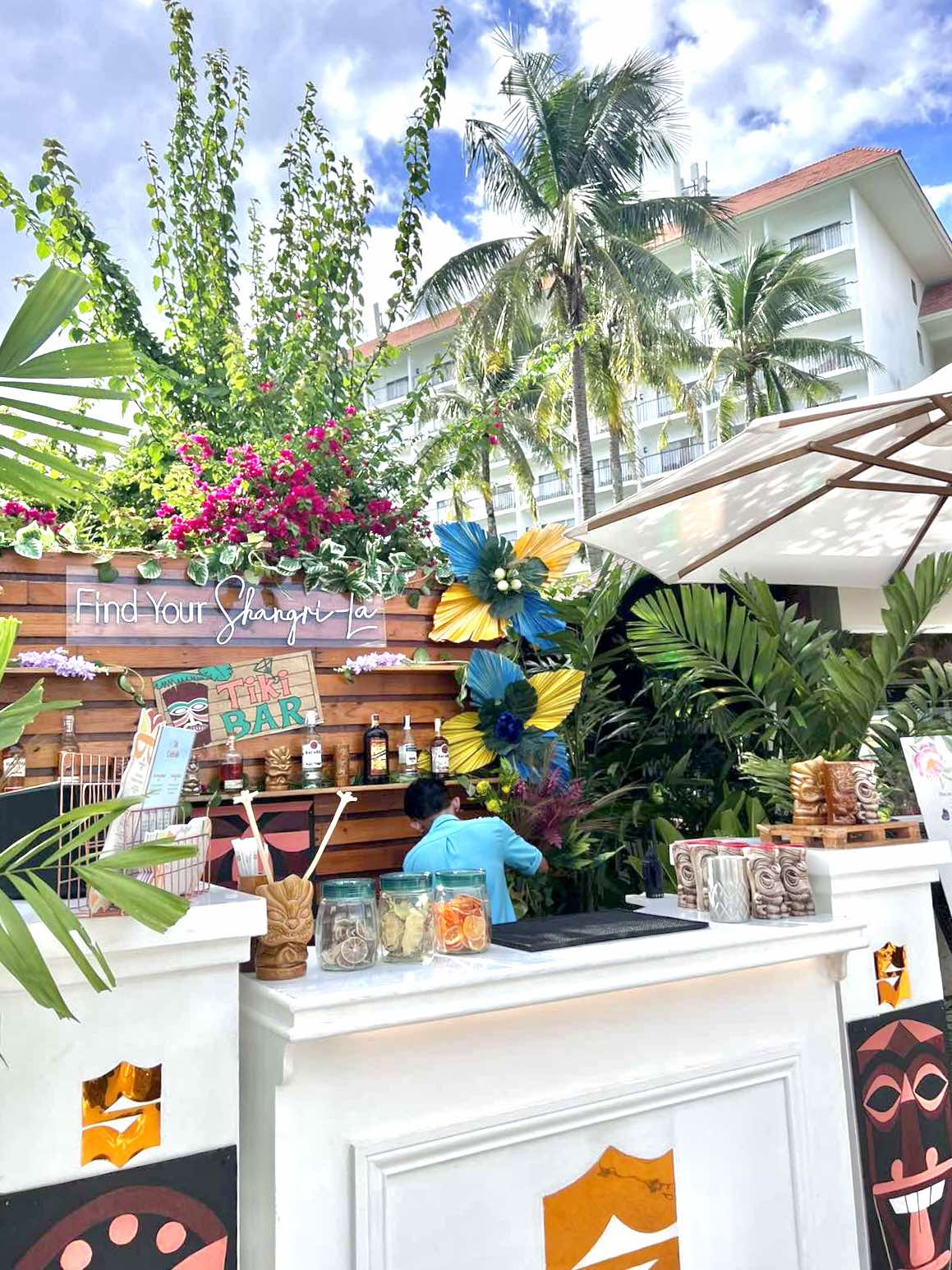
Tiki Bar at Buko Bar
Epicurean Delights by the Pool
Keep yourself fueled up as you splish and splash with the whole crew. Take a quick break from all that summer jazz with Mediterranean and Polynesian-inspired bites exquisitely crafted for your palate. From rice balls and pastas, ice creams to sliders—indulge in tastes and aromas that transport you to a world of endless, golden summers.
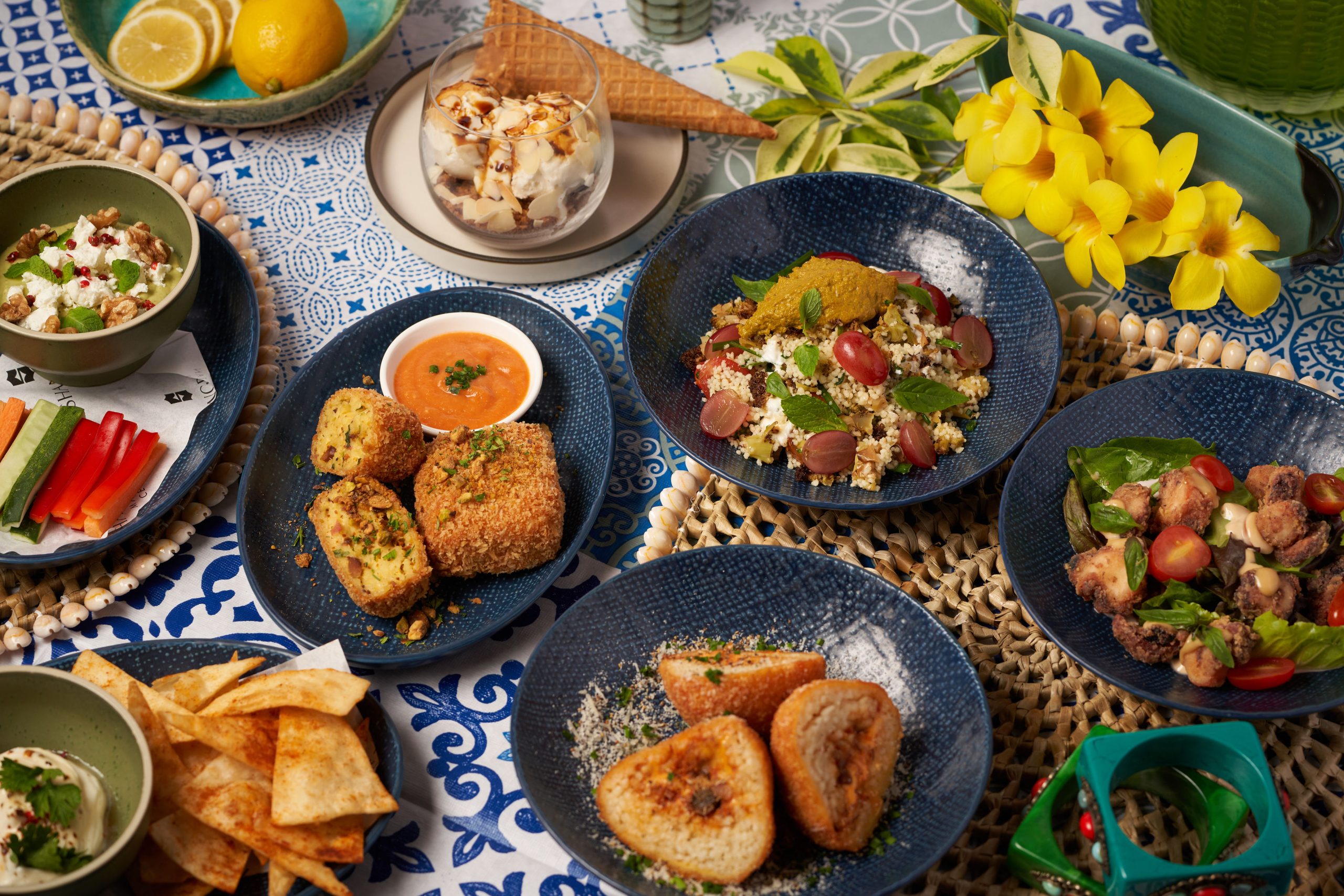
Mediterranean Selections at Acqua
A Whimsical Touch
Make it a colourful summer for the kids! Let them explore their own version of paradise with whimsical floaties, sure to keep them happily afloat. Your little ones can now freely kick and play in the water with fun and fascinating, animal-shaped inflatables.
Pleasant Sundowner Tunes
Bid the sun adieu and embrace the sunset hues with live acoustics at the Main Pool from 4pm to 6:30pm.
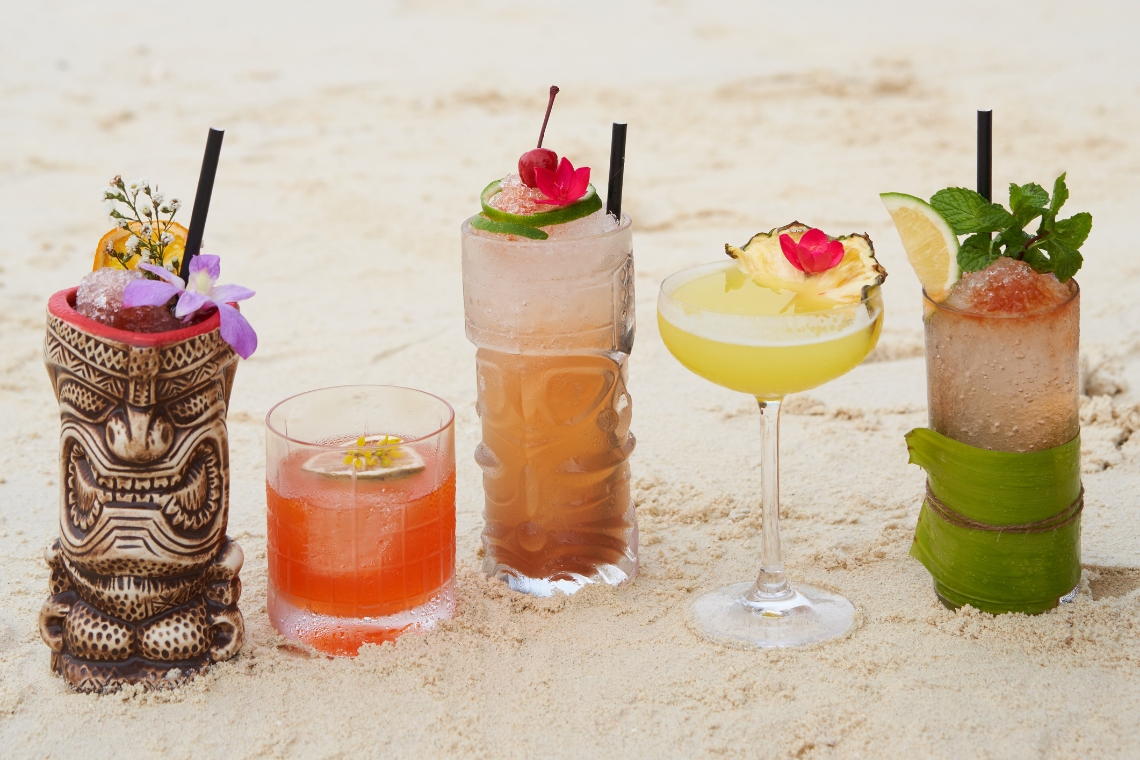
Tiki Cocktails at Buko Bar
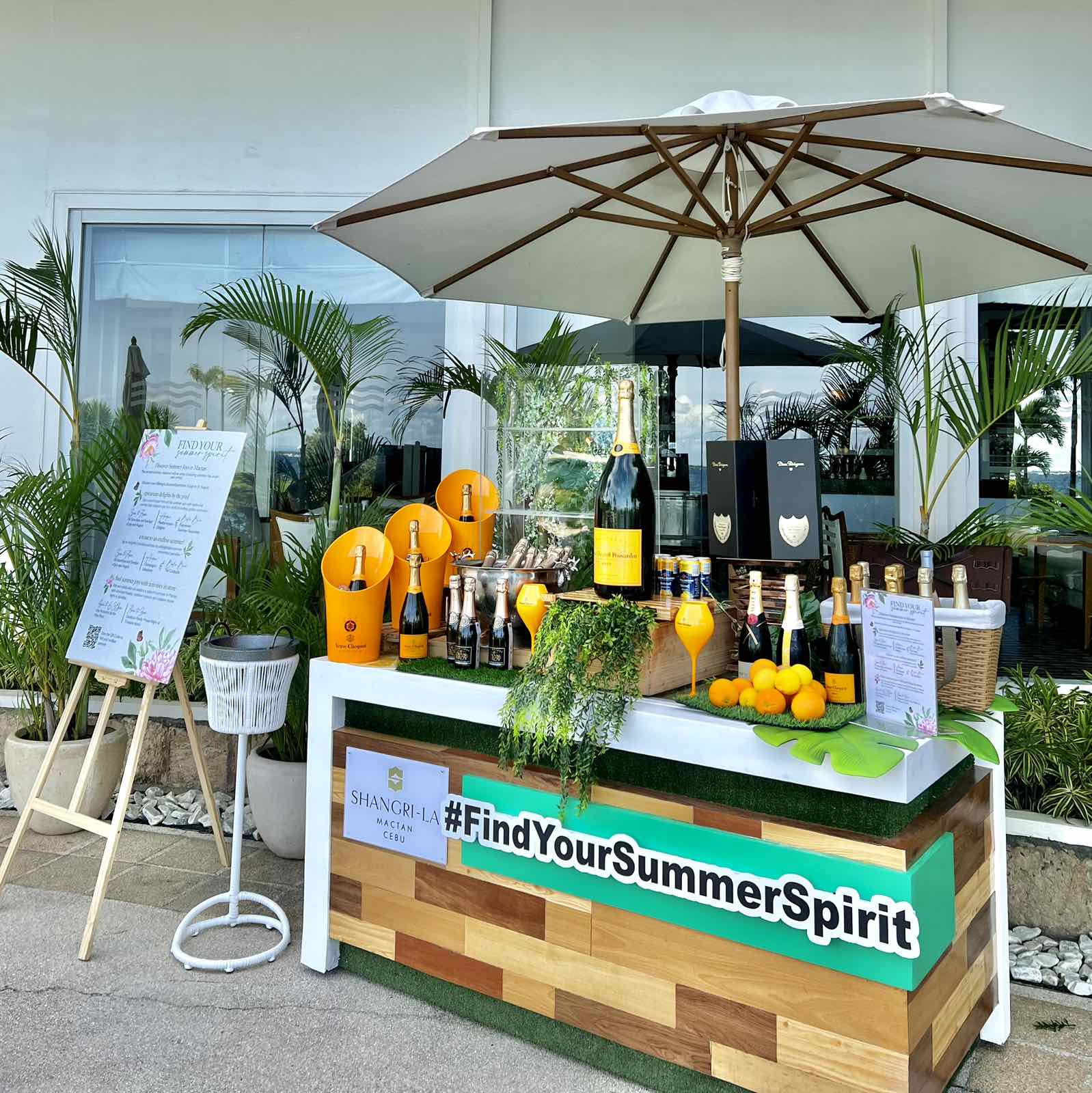
Champagne Bar at Acqua
A Toast to an Endless Summer!
Unwind and savour the tropical vibe as our expert mixologists craft refreshing Tiki cocktails and serve chilled bottles of exquisite champagne by the pool! With a backdrop of swaying palm trees and stunning ocean views, sip on delightful beverages and toast to unforgettable summer moments in paradise.
Family Outdoor Movie Night
Gather your nearest and dearest for an enchanting evening as we set up a large outdoor screen by the pool under the starry night sky. Cozy up as you enjoy a family-friendly movie that will delight both those who are young and young-at-heart at Treasure Island from 7pm to 9pm.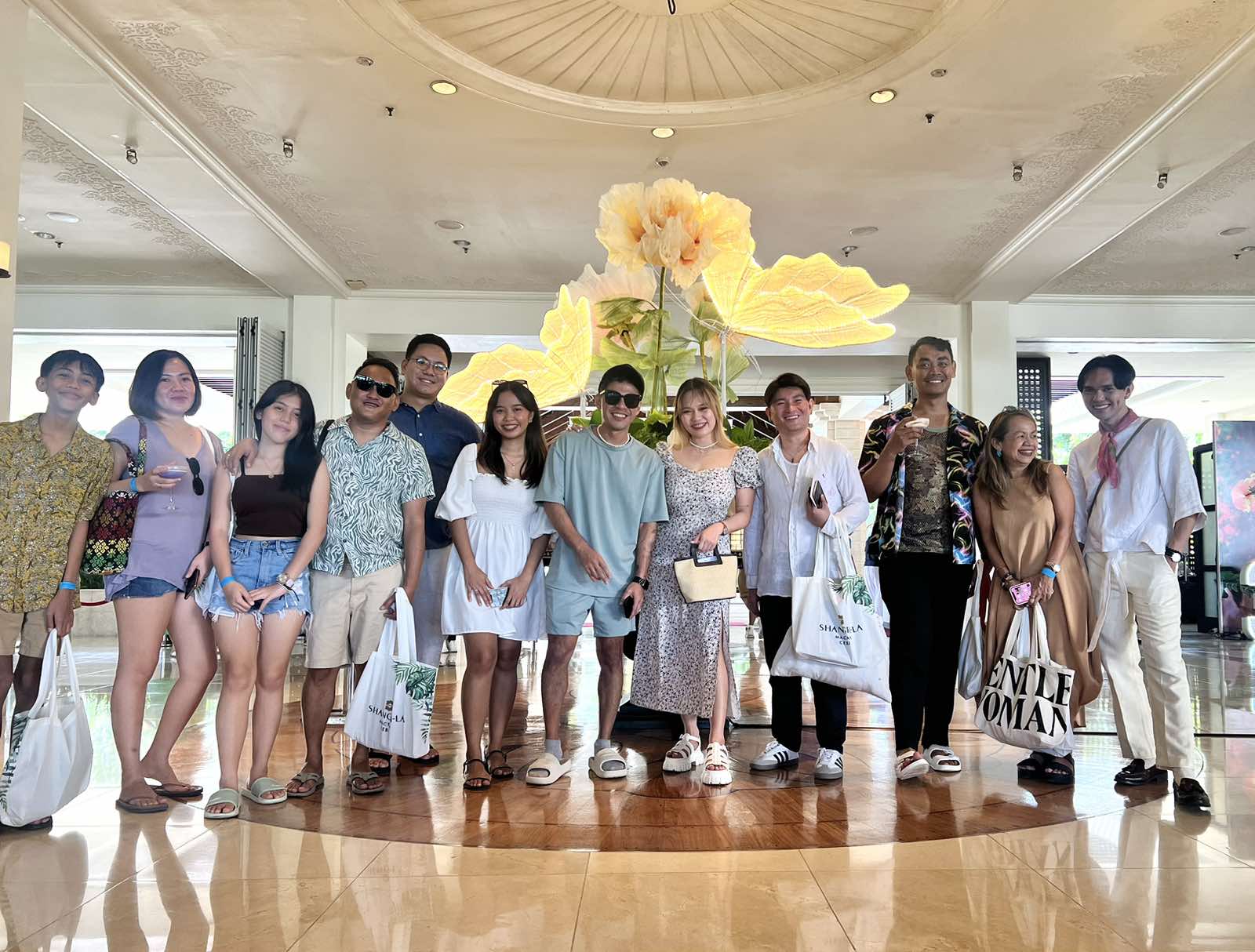
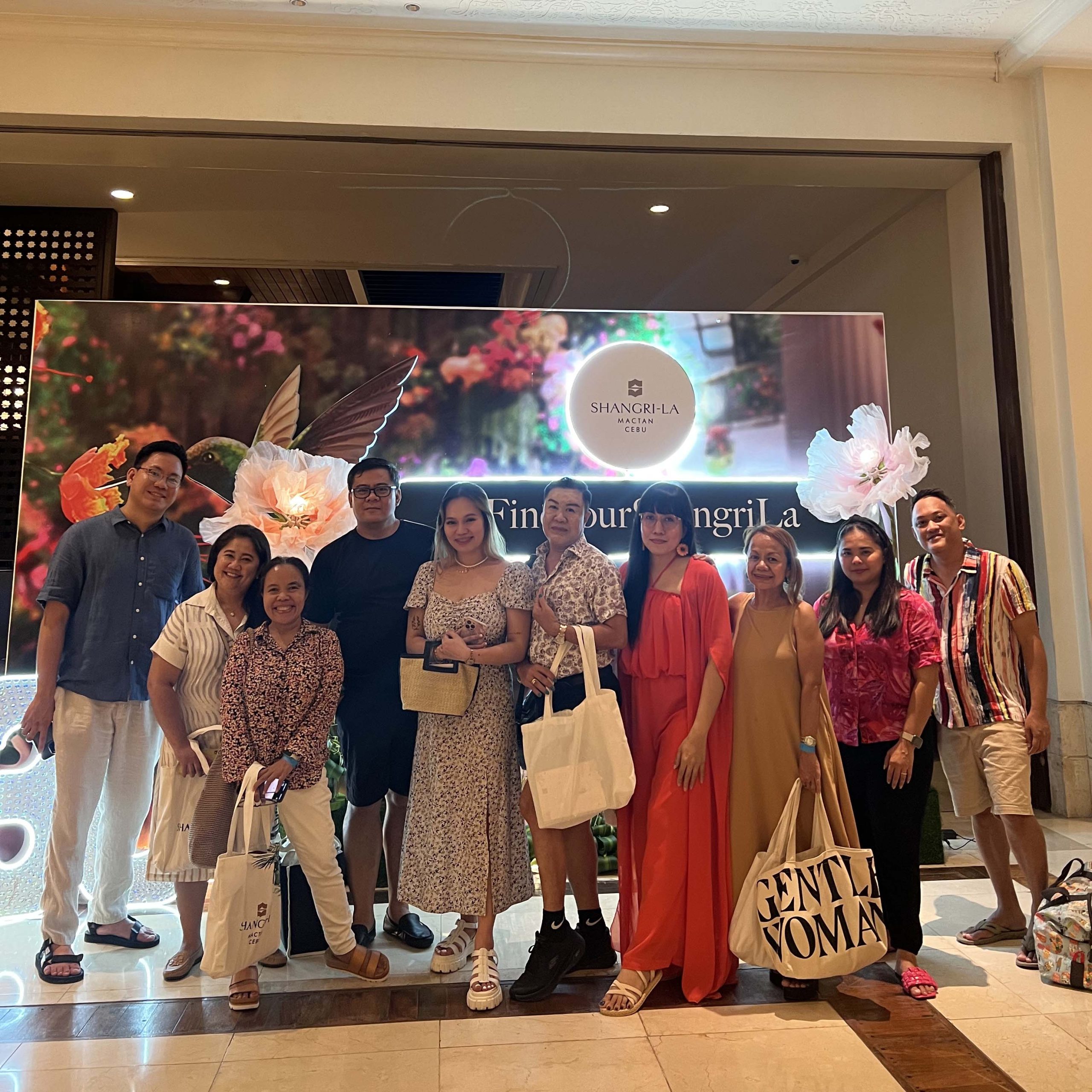
Surrounded by lush greens, let the experience bring you to a world of joy and laughter, creating cherished memories for you and the family. For more information on Shangri-La Mactan, Cebu, you may contact (032) 2310288. You may also follow them on Facebook and Instagram or visit https://www.shangri-la.com/cebu/mactanresort/ #FindYourSummerSpirit #FindYourShangriLa
inside
LONDON IN FULL BLOOM: An Exclusive Look at the recent Chelsea Flower Show
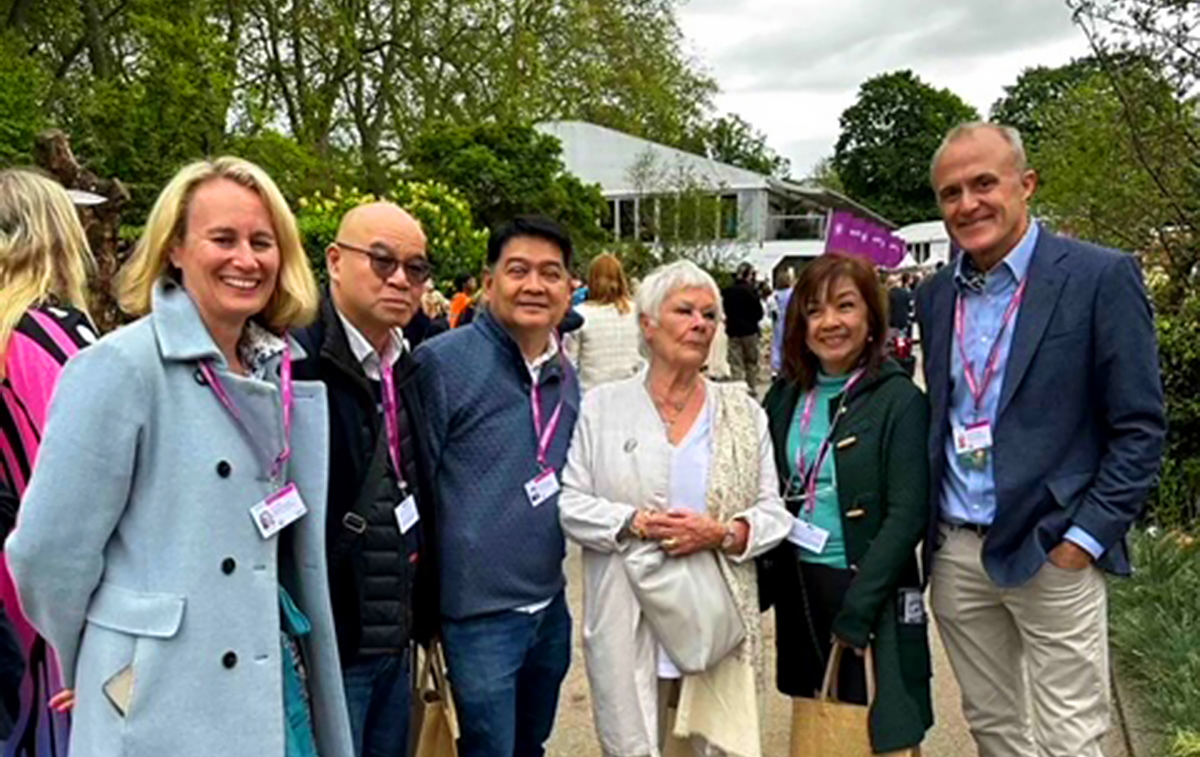
The Chelsea Flower Show in London, one of the most prestigious horticultural events in the world, returned in full glory in May 2023, captivating visitors with its stunning displays and landscape designs. Held annually on the grounds of the Royal Hospital Chelsea in London, this year’s show proved to be a true feast for the senses, showcasing an array of breathtaking gardens, vibrant floral arrangements, and innovative landscaping. The 3-day event showcased 36 outdoor gardens, including four balcony gardens for small spaces. Inside the giant pavilion, blooms compete with each other, exotic flowers, roses, and many more.
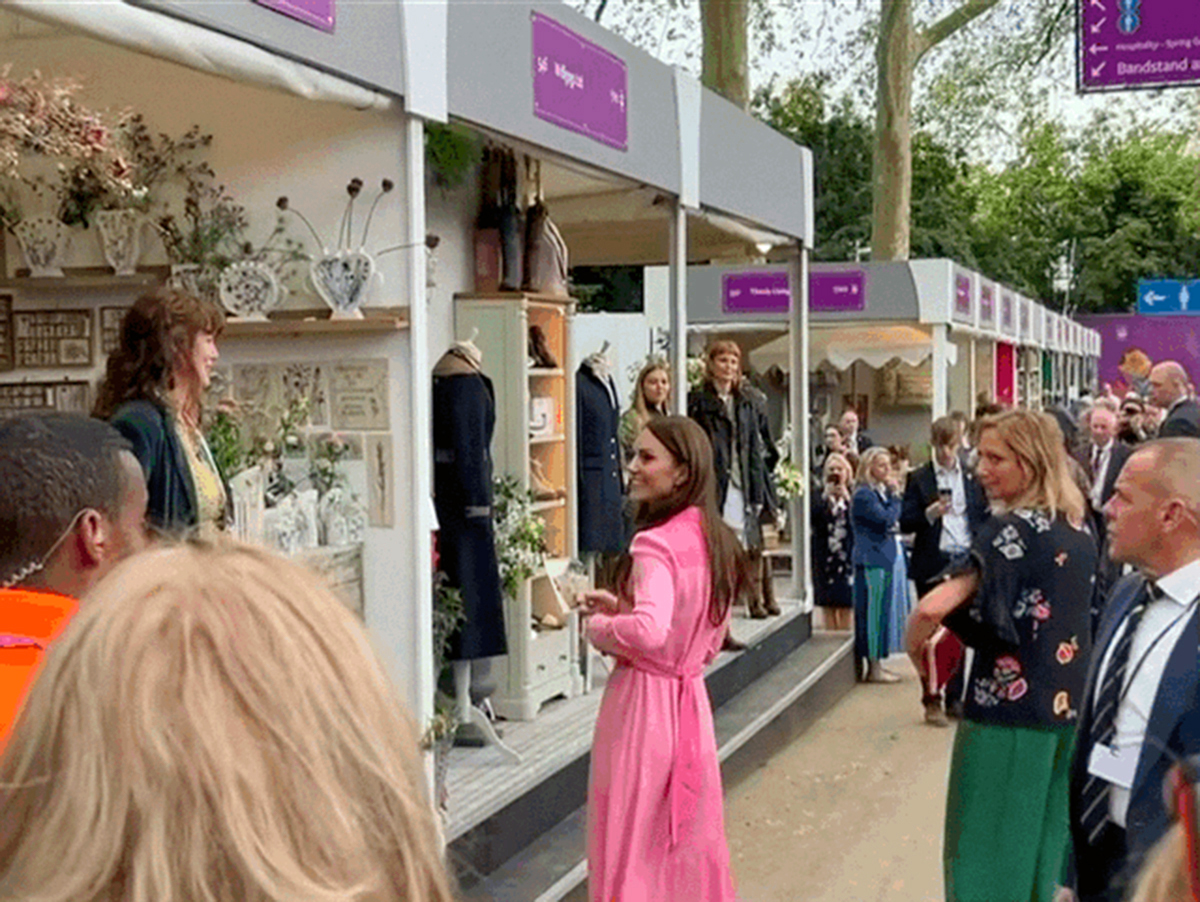
Princess Kate Middleton walking the booths at the Chelsea Flower Show.
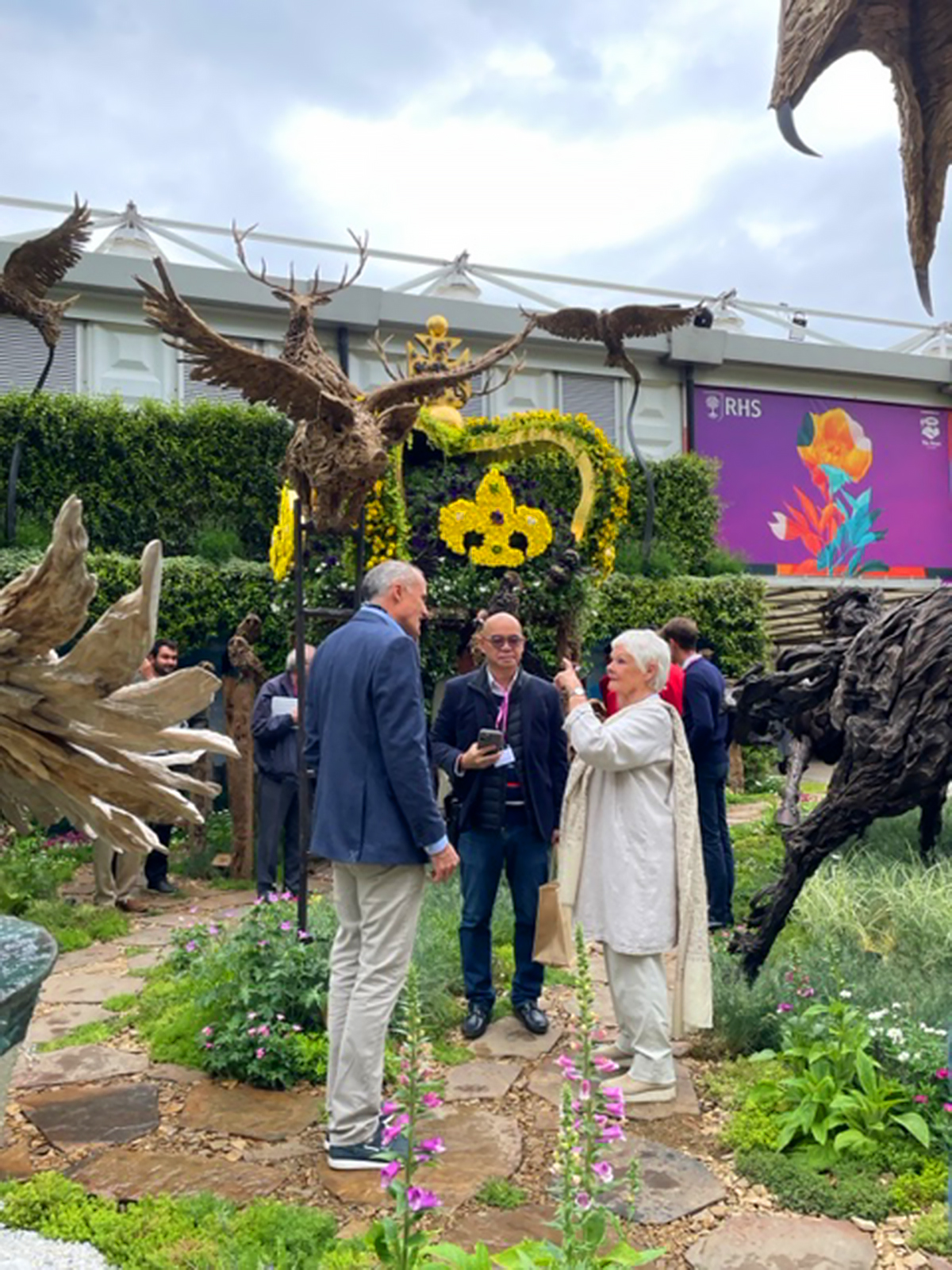
Dame Judy Dench, who owns several of Webb’s pieces in her garden, with James Doran-Webb and Jerry Sibal discussing the works of James.
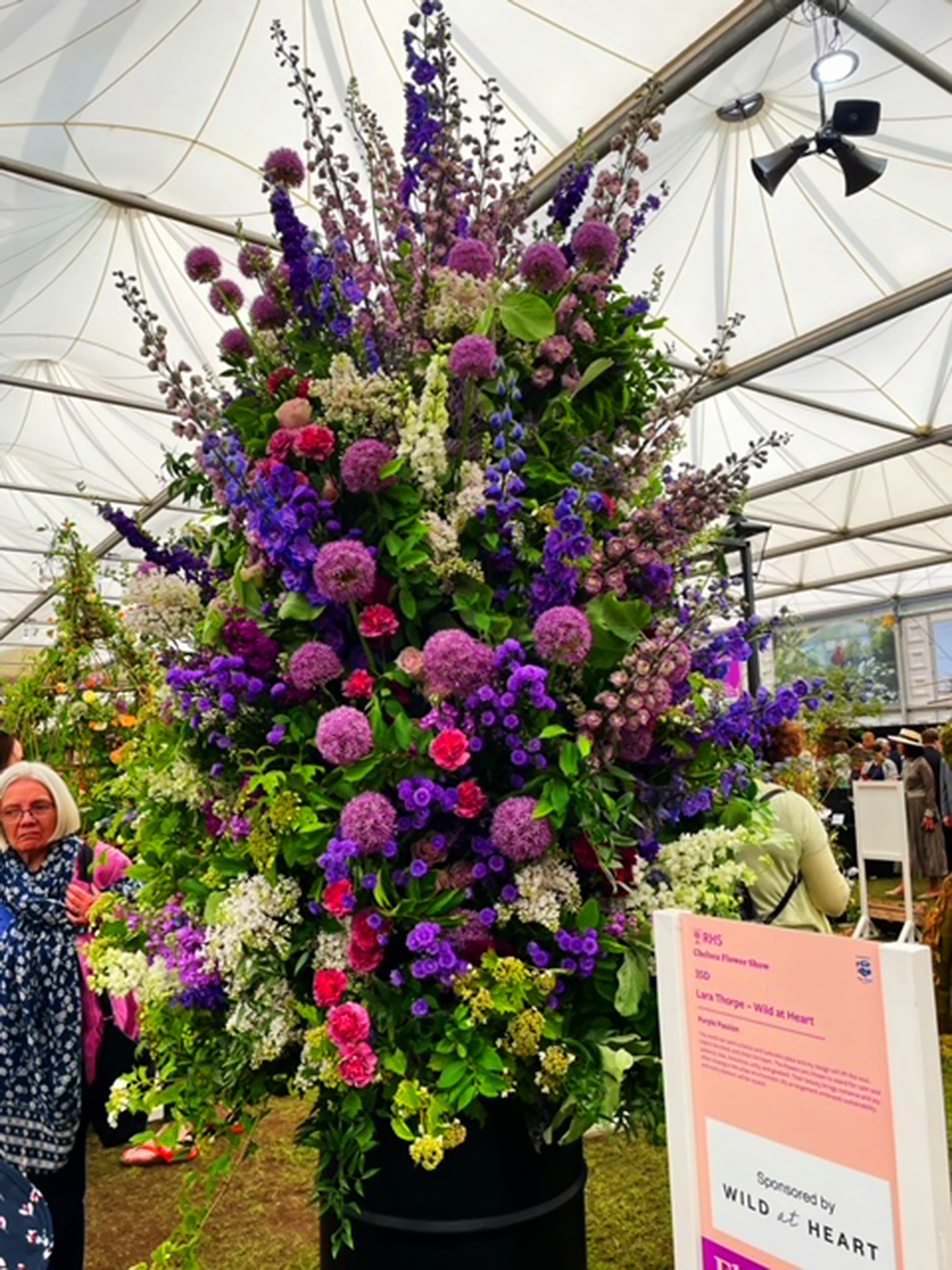
One of the flower arrangements competing at the show.
The 2023 Chelsea Flower Show embraced a Nature’s Harmony theme, with a strong focus on sustainability and mental health. The show’s organizers emphasized the importance of sustainable gardening practices and biodiversity conservation, inspiring attendees to create beautiful outdoor spaces while preserving and protecting the environment.
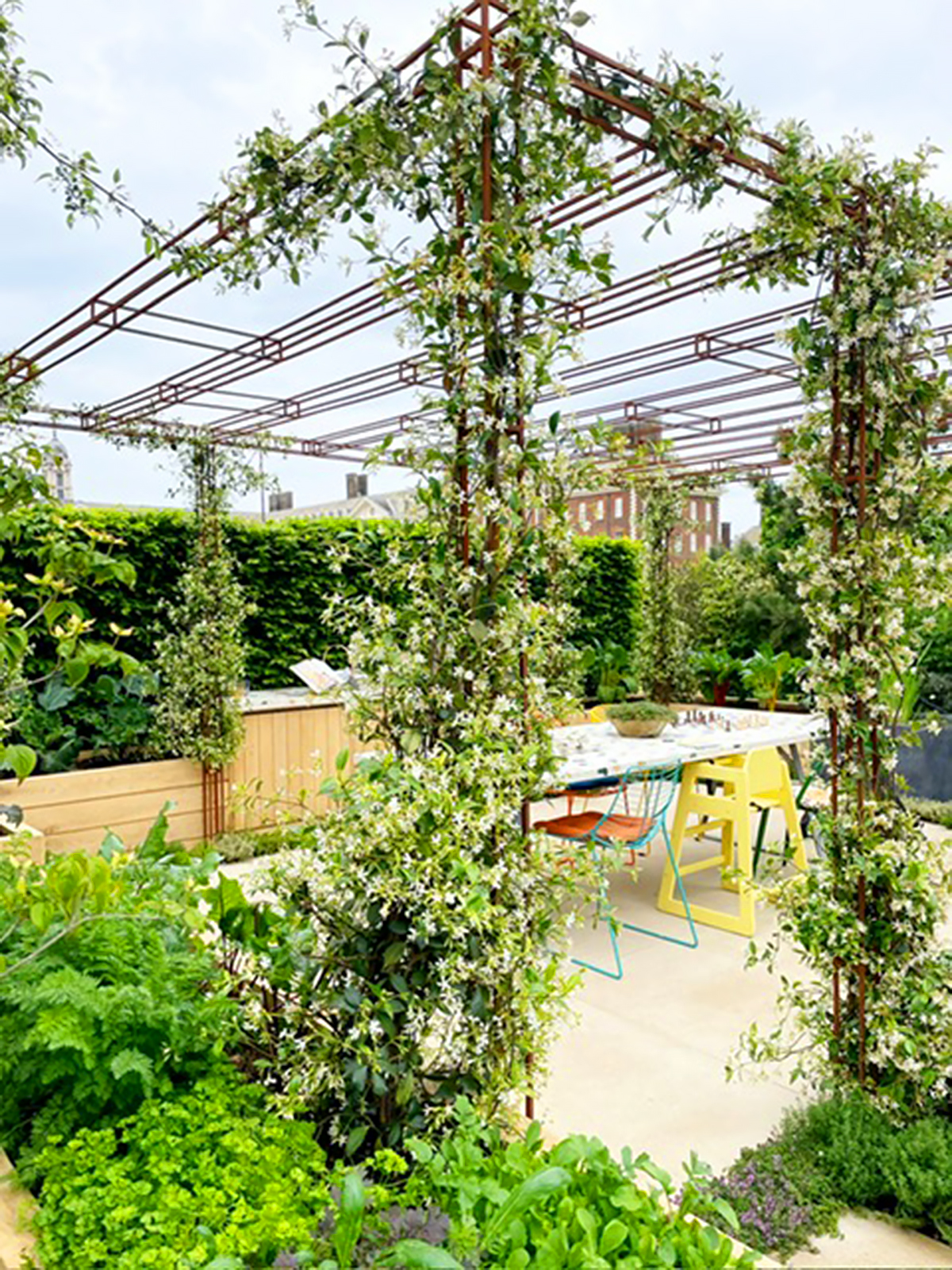
One of the floral gazebo displays recycled chairs and salvaged materials.

Shops at the Chelsea Flower Show are mostly from sustainable materials.
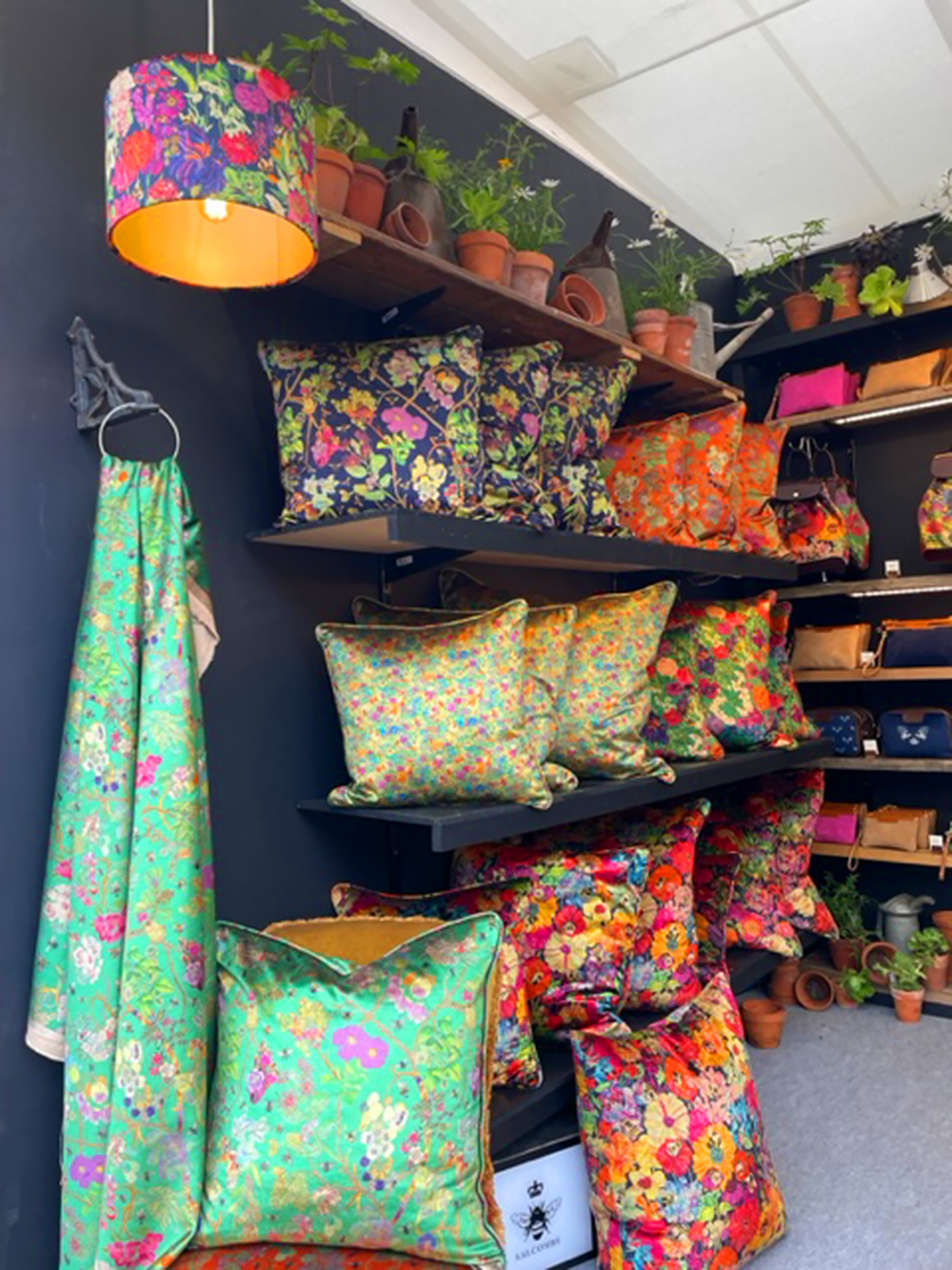
What’s Cebu got to do with the Chelsea Flower Show in London? One person. James Doran Webb (https://www.jamesdoranwebb.co.uk), an Englishman working with driftwood, has been displaying his artworks for several years. James collects cast-off driftwood and shapes them into beautiful animal shapes that find places in some of the most iconic gardens. Leaping horses, owls, reindeer, and the occasional dragon, James Webb’s creations are avidly collected by landscapers to add accent to gardens in all sizes, using cast-off wood, fitting perfectly with the sustainable element—something Mr. Webb has done quite well for the last decade.
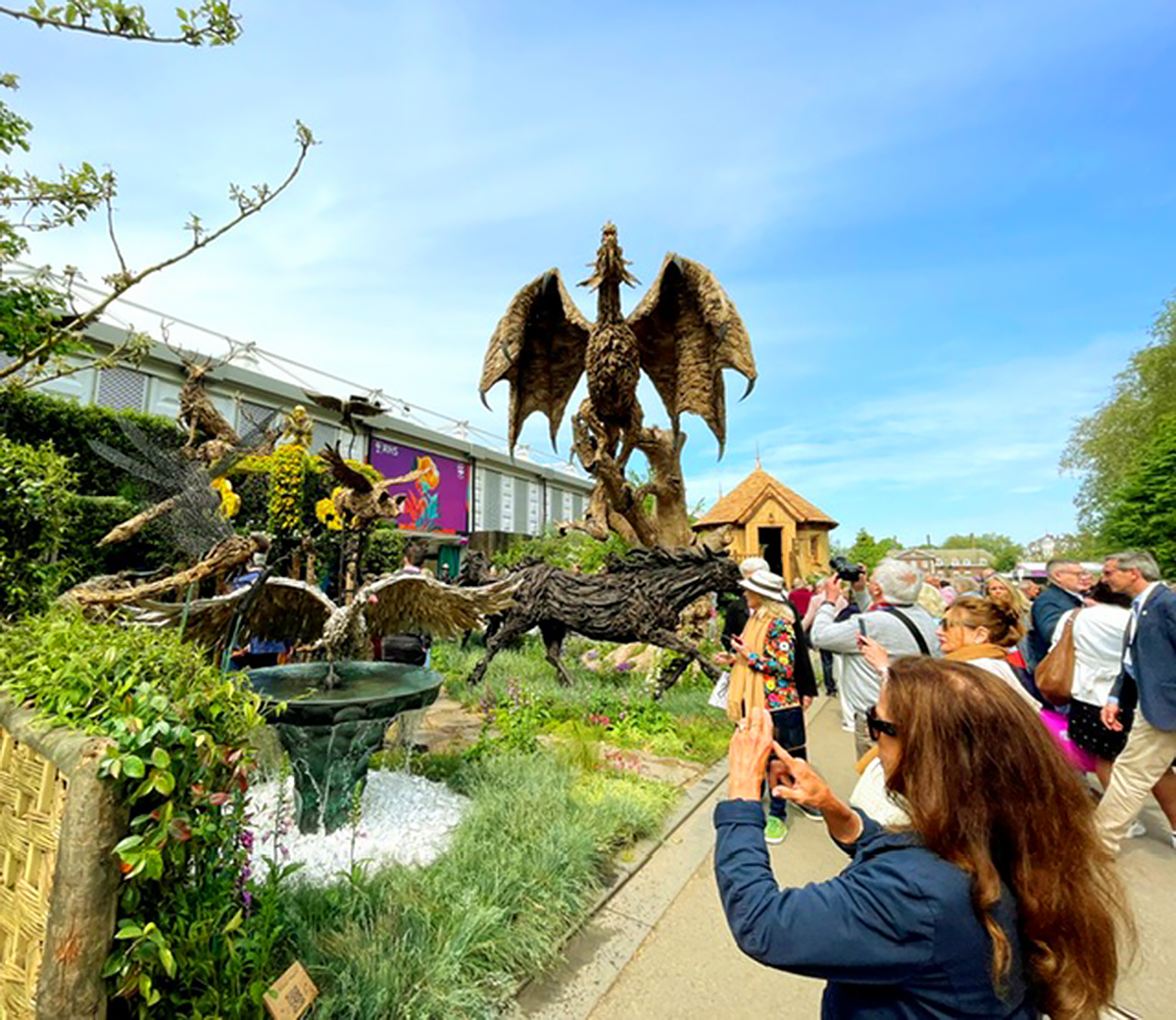
The impressive dragon of James Doran-Webb
***
The Philippine International Flower Festival will be held at the PICC in Manila from January 14 to 18, 2024. Watch out for more info from our website!
Leisure
Club Serena: A ‘Serene Luxury’ Experience in the Heart of Cebu’s Diving Mecca
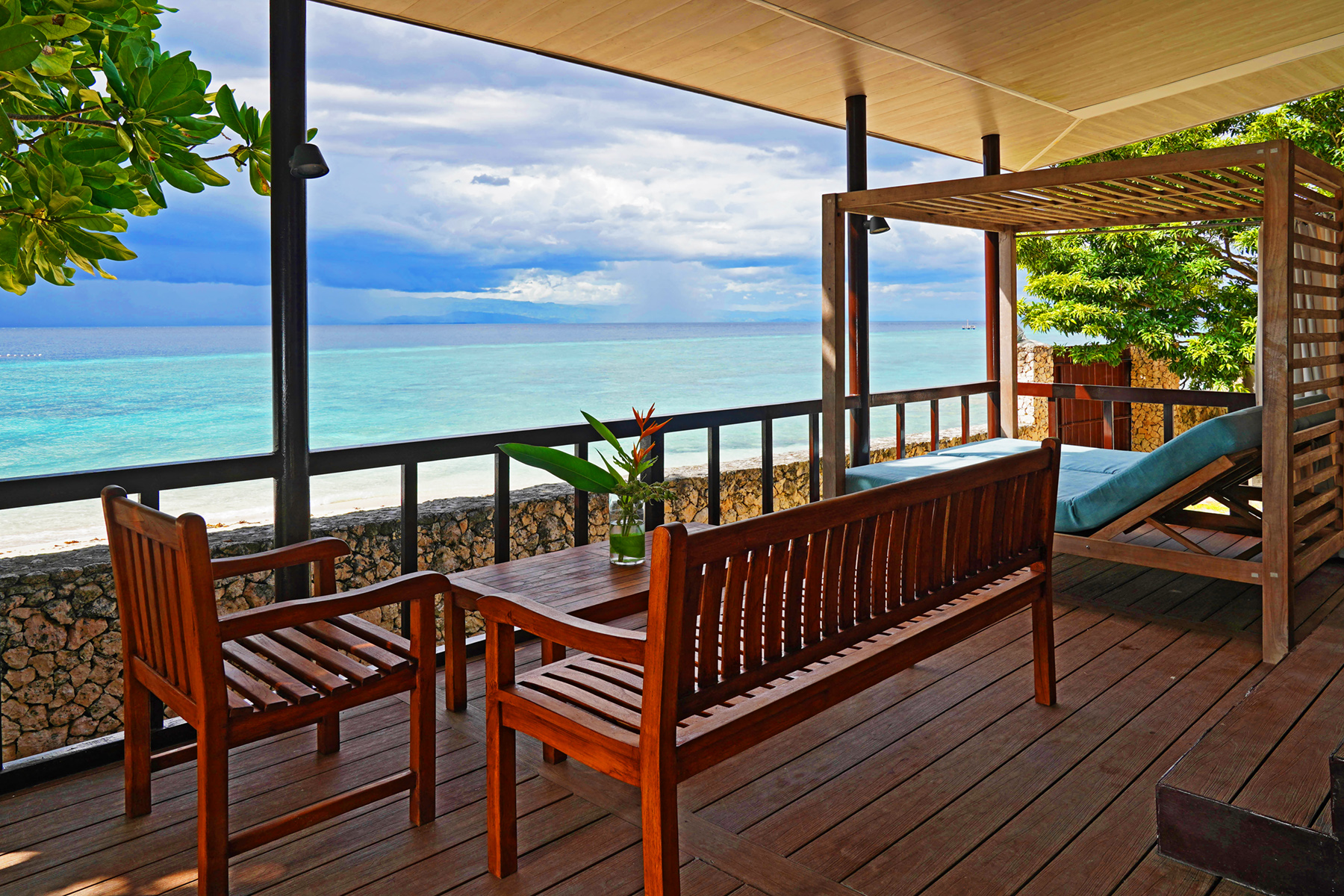
photography by GPA Art and Photography
A three-hour drive, or more, depending on traffic, the fishing town of Moalboal in the southwest of Cebu Island is an extremely popular destination for divers and weekenders who love the white sand and pink sunsets. It is also a favorite place to stay for expats looking for a laid-back life of endless coffees or cocktails.
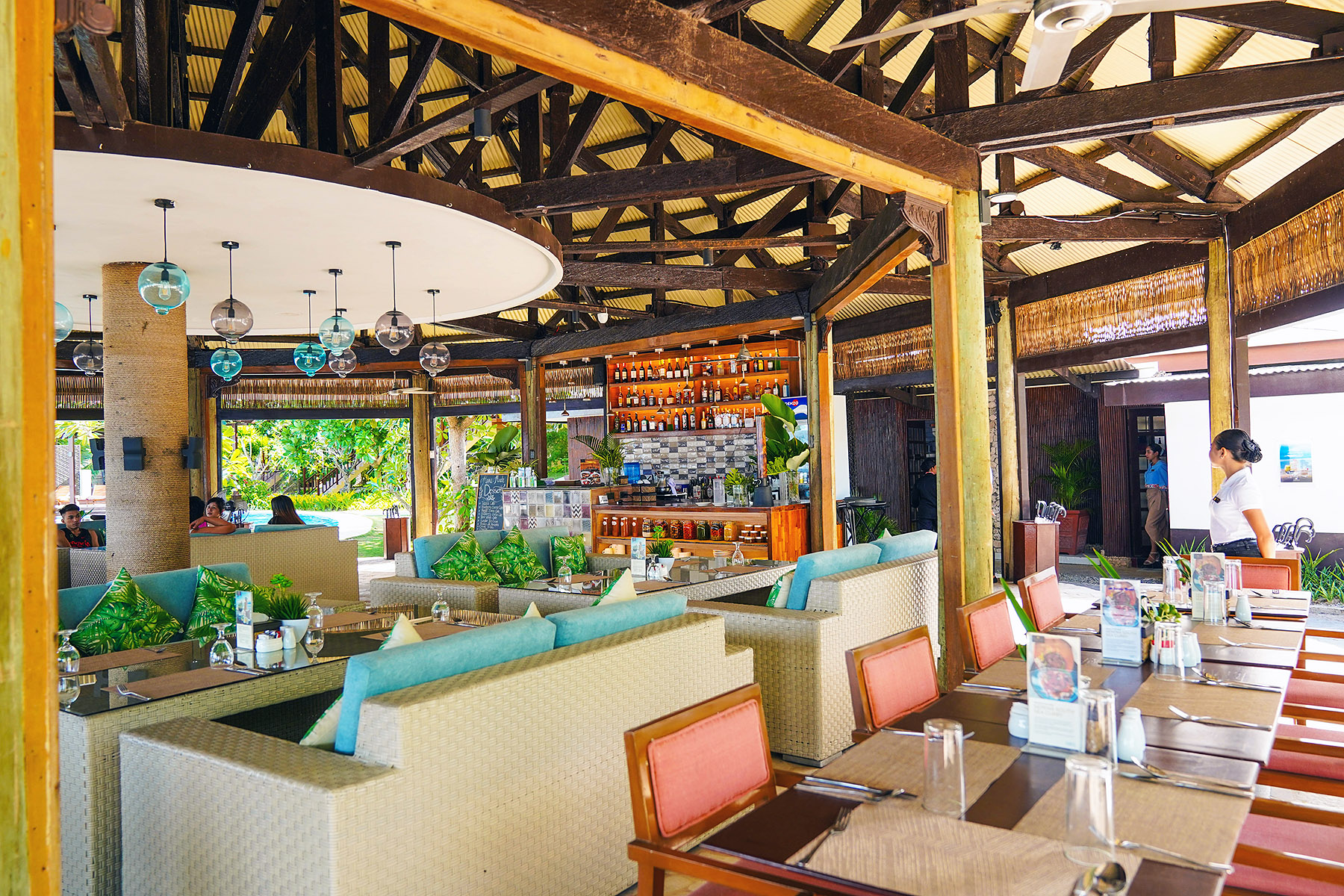
Thankfully, the big chain resorts haven’t discovered it and places to stay are mostly small family-run resorts. But if pampering is what you are looking for, there is only one hotel to book in Moalboal. Club Serena Resort is a 1.7-hectare beachfront property perched above coral rocks, presenting a unique union of luxurious accommodations and a host of activities to be enjoyed. This hidden gem is reached through a dirt road away from the main highway. Fronting a wide swath of white sand beach, it is an easy walk past several smaller resorts to reach the main town.

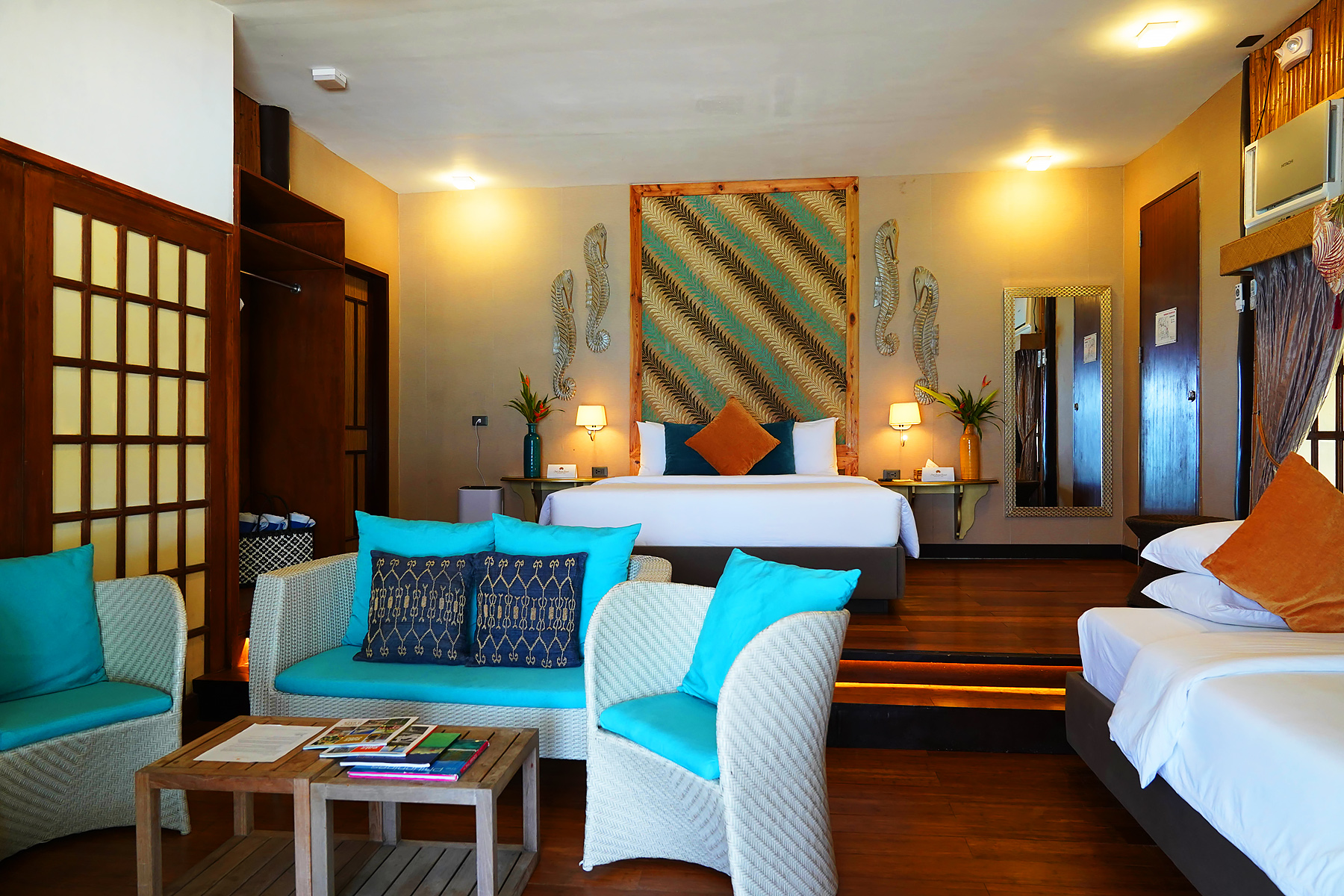
Recently renovated by noted architect James Jao, the new Club Serena has 17 rooms, three swimming pools, a restaurant, and a beachfront event space, all designed with modern Filipino aesthetic. On the drawing board are more rooms to be added, an expansion of their modern dive shop, and their popular Kids’ Club program. Their food outlet, Mira, offers all-day dining, favorite among visitors and locals, as well as the growing expat community that has settled in Moalboal.
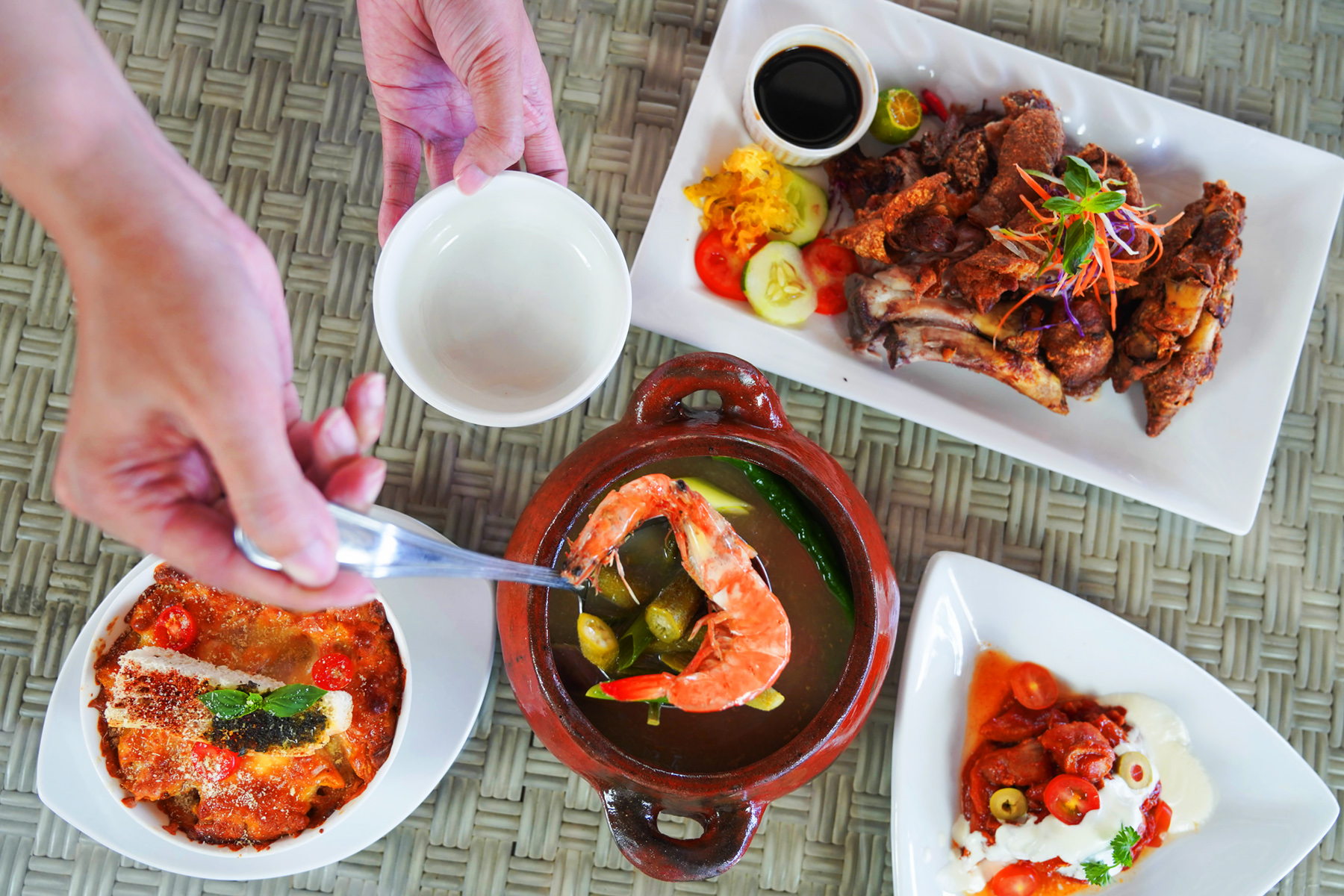
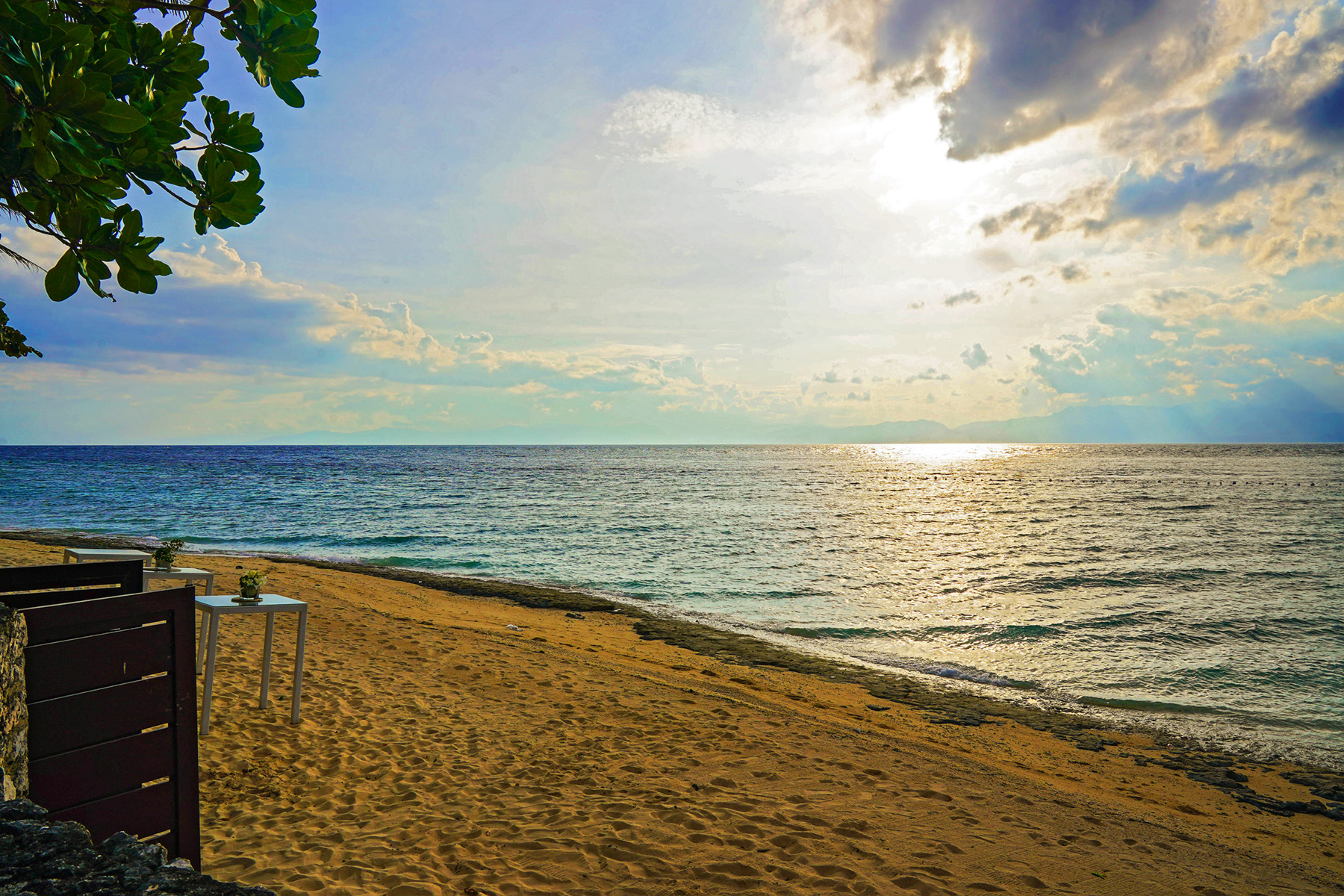
Club Serena offers diving courses for adults and kids by their resident operator, Seven Seas Aquanauts Phil. Corp, a PADI 5 accredited diving facility operating since 1988. For a complete list of the courses and their rates, please call (+63) 917.872.6367 or (+63) 905.459.5307.
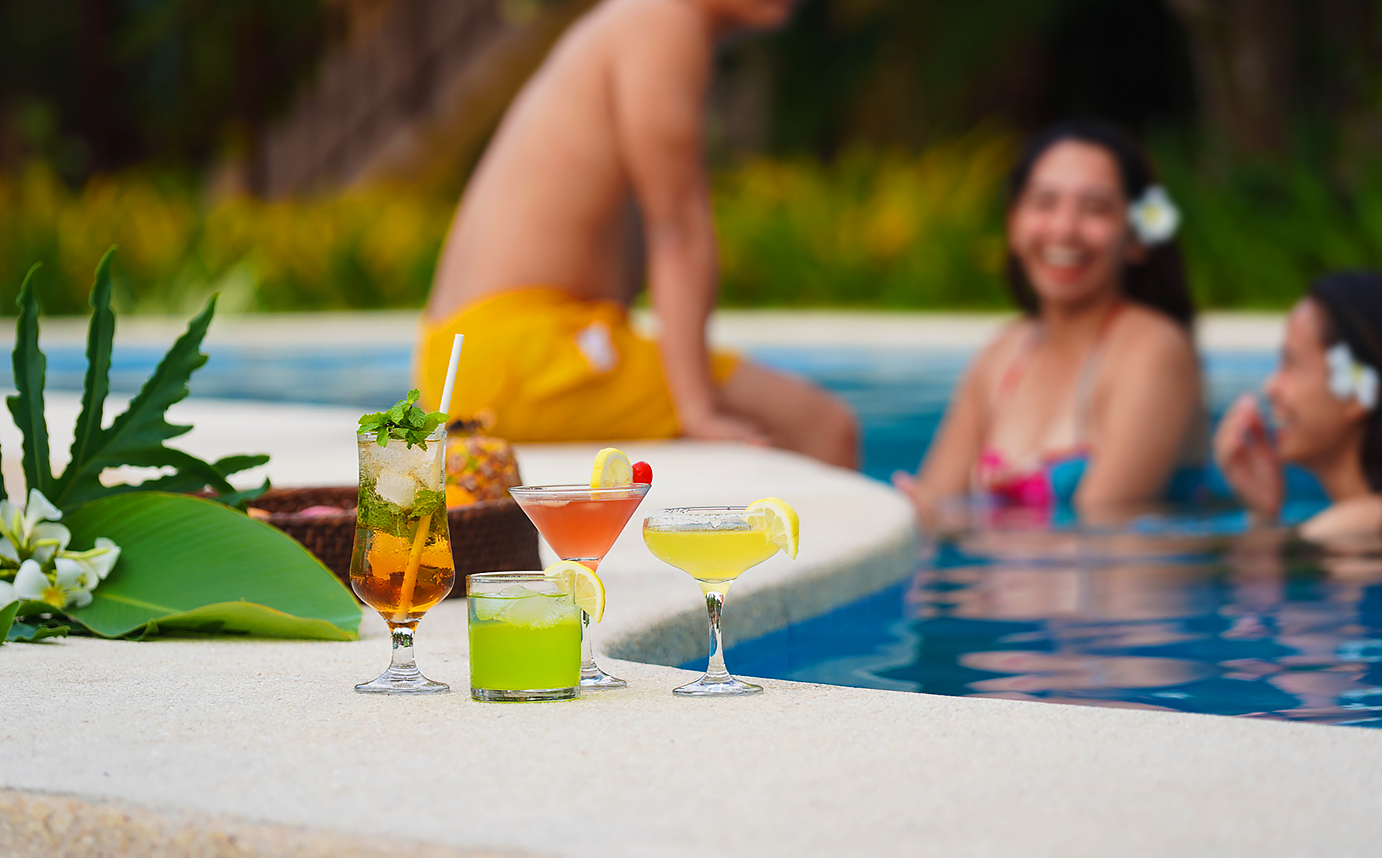
The resort encourages above-water activities as well, and they have several paddle boards and kayaks available for guests to use.
For rates and more information, visit www.clubserenaresort.com or email sayhello@clubserenaresort.com or (+63) 917.872.6367 or (+63) 905.459.5307. You can also visit their Facebook page for updates.
-

 Design3 months ago
Design3 months agoFilipino graphic designer makes history, joins Switzerland’s Museum of Avant-garde among genre’s greats
-

 Events4 weeks ago
Events4 weeks agoFlying Tiger Copenhagen Lands in Cebu
-
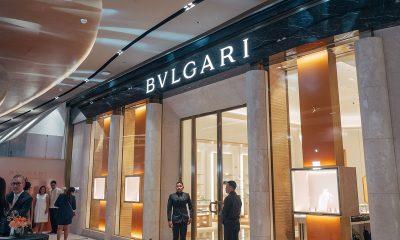
 Events2 months ago
Events2 months agoBVLGARI in Cebu
-

 Events2 months ago
Events2 months agoTrade in Your Old Watch and Save Big on a New Timepiece at The Watch Store
-

 Design3 months ago
Design3 months agoPottery Barn and West Elm Launches Designer’s Rewards Circle in Cebu
-
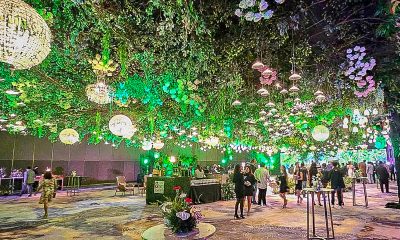
 Eats2 months ago
Eats2 months agoA Moving Feast: Cebu Food and Wine Festival 2024 Opens in NUSTAR Resort
-

 Events3 weeks ago
Events3 weeks agoThe First NUSTAR BALL
-
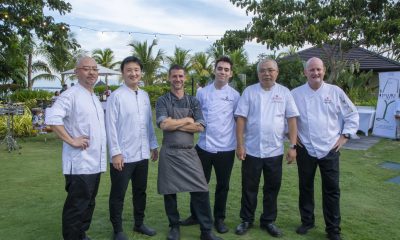
 Events2 weeks ago
Events2 weeks agoA Feast for the Senses




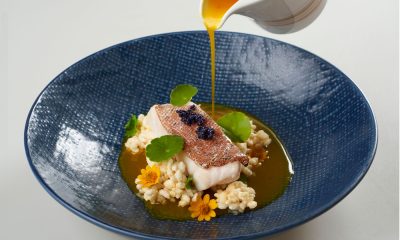

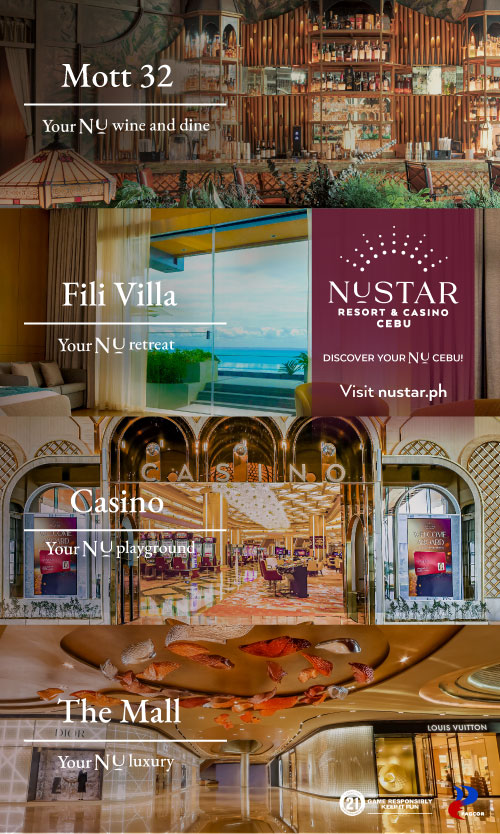






You must be logged in to post a comment Login